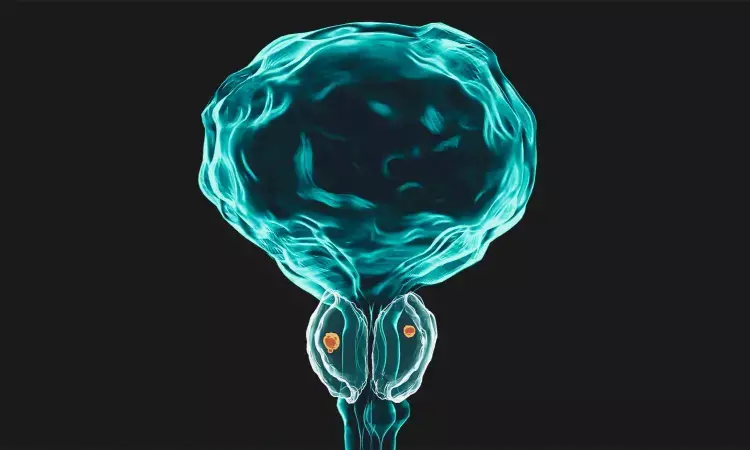- Home
- Medical news & Guidelines
- Anesthesiology
- Cardiology and CTVS
- Critical Care
- Dentistry
- Dermatology
- Diabetes and Endocrinology
- ENT
- Gastroenterology
- Medicine
- Nephrology
- Neurology
- Obstretics-Gynaecology
- Oncology
- Ophthalmology
- Orthopaedics
- Pediatrics-Neonatology
- Psychiatry
- Pulmonology
- Radiology
- Surgery
- Urology
- Laboratory Medicine
- Diet
- Nursing
- Paramedical
- Physiotherapy
- Health news
- Fact Check
- Bone Health Fact Check
- Brain Health Fact Check
- Cancer Related Fact Check
- Child Care Fact Check
- Dental and oral health fact check
- Diabetes and metabolic health fact check
- Diet and Nutrition Fact Check
- Eye and ENT Care Fact Check
- Fitness fact check
- Gut health fact check
- Heart health fact check
- Kidney health fact check
- Medical education fact check
- Men's health fact check
- Respiratory fact check
- Skin and hair care fact check
- Vaccine and Immunization fact check
- Women's health fact check
- AYUSH
- State News
- Andaman and Nicobar Islands
- Andhra Pradesh
- Arunachal Pradesh
- Assam
- Bihar
- Chandigarh
- Chattisgarh
- Dadra and Nagar Haveli
- Daman and Diu
- Delhi
- Goa
- Gujarat
- Haryana
- Himachal Pradesh
- Jammu & Kashmir
- Jharkhand
- Karnataka
- Kerala
- Ladakh
- Lakshadweep
- Madhya Pradesh
- Maharashtra
- Manipur
- Meghalaya
- Mizoram
- Nagaland
- Odisha
- Puducherry
- Punjab
- Rajasthan
- Sikkim
- Tamil Nadu
- Telangana
- Tripura
- Uttar Pradesh
- Uttrakhand
- West Bengal
- Medical Education
- Industry
Transrectal Prostate Biopsy: Nitrous oxide may significantly reduce patient-rated pain

USA: Patient-adjusted nitrous oxide (N2O), commonly called laughing gas, at levels of 20% to 45%, is a safe adjunct during transrectal prostate biopsy, a small randomized study published in The Journal of Urology has shown.
The researchers revealed that patient-adjusted N2O did not reduce anxiety associated with a transrectal prostate biopsy but significantly reduced pain as compared to standard anaesthesia.
The primary endpoint, scores on a standardized anxiety questionnaire, did not vary significantly between patients randomized to N2O or standard care. However, patients in the N2O group reported significantly less pain, and urologists who performed the biopsies rated patient tolerance of the procedure significantly better with N2O addition.
"Procedure time and complication rates did not differ between the two groups," the researchers reported.
According to the authors, this is the first prospective, randomized, controlled study evaluating the effects of low-dose (20%-45%) N2O on patient experience during transrectal prostate biopsy.
"There was not an observed reduction in the study’s primary endpoints related to patient anxiety; however, there was an observed reduction in secondary endpoints of patient-perceived pain," the researchers wrote. "Overall, self-adjusted nitrous oxide (SANO) was well tolerated with no significant side effects and no impact on the ease of the operating urologist’s performance of the procedure."
Transrectal prostate biopsy is a common ambulatory procedure that can lead to anxiety and pain for some men. Low-dose, adjustable nitrous oxide is increasingly being used to improve the experience of care for patients undergoing painful procedures. Heidi J. Rayala, Division of Urologic Surgery, Beth Israel Deaconess Medical Center, Boston, Massachusetts, and colleagues aimed to evaluate the safety and efficacy of low-dose (<45%) nitrous oxide, which has not been previously established for transrectal prostate biopsies.
For this purpose, they conducted a double-blind, prospective, single-institution, randomized, controlled trial on patients undergoing transrectal prostate biopsies. 133 patients were randomized to receive either self-adjusted nitrous oxide (n=66) or oxygen (n=67), in addition to routine periprostatic bupivacaine block.
At levels between 20% and 45%, nitrous oxide was adjusted to patients' desired effect. Patients completed a visual analog scale for anxiety, State-Trait Anxiety Inventory, and a visual analog scale for pain immediately before and after the biopsy. The blinded operating urologist evaluated the ease of the procedure.
The researchers assessed periprocedural vitals and complications. Patients were allowed to drive home independently.
The study revealed the following findings:
- There was no statistically significant difference in the primary anxiety endpoint of the State-Trait Anxiety Inventory or the visual analog scale for anxiety scores between the nitrous oxide and oxygen groups.
- Patients in the nitrous oxide group reported significantly lower visual analog scales for pain scores compared to the oxygen group.
- The operating urologists’ rating of tolerance of the procedure was better in the nitrous oxide group.
- There were no differences in biopsy performance time. Complications were similarly low between the two groups.
The findings of the study show that delivery of low-dose N2O titrated to the patient’s desired effect during transrectal prostate biopsy is safe and well tolerated, with a reduction of the patient’s pain during prostate biopsy, but no discernable impact on anxiety.
"These results indicate that the option of adjuvant N2O may improve patients’ experience of care as they undergo diagnostic evaluation for prostate cancer," the researchers concluded.
Reference:
Escobar AJ, Krishna S, Flowers KM, Abello A, Gershman B, Wagner AA, Chang P, Korets R, Mistretta CJ, Schreiber KL, Olumi AF, Rayala HJ. Practical Use of Self-Adjusted Nitrous Oxide During Transrectal Prostate Biopsy: A Double-Blind Randomized Controlled Trial. J Urol. 2024 Feb;211(2):214-222. doi: 10.1097/JU.0000000000003789. Epub 2023 Nov 20. PMID: 37984067.
Dr Kamal Kant Kohli-MBBS, DTCD- a chest specialist with more than 30 years of practice and a flair for writing clinical articles, Dr Kamal Kant Kohli joined Medical Dialogues as a Chief Editor of Medical News. Besides writing articles, as an editor, he proofreads and verifies all the medical content published on Medical Dialogues including those coming from journals, studies,medical conferences,guidelines etc. Email: drkohli@medicaldialogues.in. Contact no. 011-43720751


